The Importance of Proper Ventilation in Modern Homes
A well-ventilated home supports overall well-being by promoting fresh air circulation and reducing indoor contaminants.
Proper ventilation is fundamental in managing a comfortable and healthy indoor environment. Modern homes, planned with energy efficiency in mind, often feature tighter seals that can trap pollutants, moisture, and stale air inside. Without adequate airflow, air quality declines, leading to potential health concerns and structural issues. A well-ventilated home supports overall well-being by promoting fresh air circulation and reducing indoor contaminants.
Enhancing Indoor Air Quality
Indoor air often contains pollutants such as dust, pet dander, and volatile organic compounds (VOCs) from household products. Without proper ventilation, these contaminants linger, contributing to respiratory issues and allergies. A well-ventilated home circulates fresh air, reducing airborne irritants and promoting a healthier living space. Mechanical ventilation systems, like heat recovery ventilators (HRVs) and energy recovery ventilators (ERVs), further enhance air exchange while maintaining energy efficiency.
Regulating Humidity Levels
Excess moisture indoors leads to mold growth, musty odors, and potential structural damage. Proper ventilation helps regulate humidity levels, preventing condensation buildup on walls and windows. A balanced moisture level preserves the integrity of building materials and reduces the risk of mold-related health problems. Bathrooms, kitchens, and laundry rooms benefit from dedicated exhaust fans that help remove excess humidity at the source, preventing damage and discomfort.
Reducing Energy Costs
Efficient ventilation reduces the strain on heating and cooling systems. By allowing fresh air to move freely, indoor temperatures stabilize, decreasing the need for excessive air conditioning or heating. Strategic ventilation design supports energy conservation, lowering utility bills, and improving comfort. Natural ventilation methods, such as operable windows and cross-ventilation techniques, enhance airflow while reducing reliance on mechanical systems.
Eliminating Stale Air and Odors
Cooking, cleaning, and daily activities generate odors that can linger without adequate ventilation. Stagnant air leads to an unpleasant indoor atmosphere. A well-ventilated home continuously removes odors and replaces stale air with fresh outdoor air, maintaining a pleasant indoor environment. Air purifiers and high-efficiency particulate air (HEPA) filters complement ventilation systems by capturing airborne particles, improving indoor air freshness.
Protecting Structural Integrity
Trapped moisture weakens building materials over time, leading to issues such as warped wood, peeling paint, and deteriorating insulation. Proper airflow prevents these problems by expelling excess moisture before it causes damage. A well-ventilated home retains its structural integrity, reducing the need for frequent repairs and maintenance. Crawl spaces, attics, and basements benefit from specialized ventilation solutions that prevent excessive moisture buildup and potential damage.
Supporting HVAC System Efficiency
A properly ventilated home enhances the efficiency of heating, ventilation, and air conditioning (HVAC) systems. When fresh air circulates freely, HVAC units operate more efficiently, distributing conditioned air evenly throughout the space. This balance improves overall system longevity and performance. Regular maintenance of air ducts and ventilation components further optimizes HVAC efficiency, preventing blockages and air circulation issues.
Creating a Comfortable Living Environment
A home with balanced ventilation maintains consistent indoor temperatures and air freshness. Stuffy rooms and fluctuating temperatures can create discomfort, making it difficult to relax or focus. Proper airflow adds to a more comfortable and enjoyable living environment, benefiting everyone in the household. Outdoor air intake vents, ceiling fans, and strategically placed vents further support airflow regulation, enhancing indoor comfort year-round.
The Role of Smart Ventilation Systems
Advancements in smart home technology have introduced automated ventilation solutions that monitor indoor air quality and adjust airflow accordingly. Smart thermostats, humidity sensors, and programmable ventilation systems work together to optimize fresh air exchange while minimizing energy consumption. These intelligent systems provide real-time insights into air quality, empowering homeowners to make informed decisions about ventilation adjustments.
Modern homes benefit greatly from thoughtful ventilation design. Proper airflow's advantages cannot be overstated, from improving air quality and regulating humidity to reducing energy costs and protecting structural integrity. Investing in a well-ventilated home fosters a healthier, more efficient, and more comfortable living space for years to come. Prioritizing ventilation solutions tailored to household needs enhances overall well-being and long-term property value.
CMB Air is a residential heating and cooling installation, service, and repair company with 15+ years of experience serving Tampa and surrounding areas. If you need a new air conditioner, repair, maintenance or some other service, we can help! Call (813) 447-1443 today!

